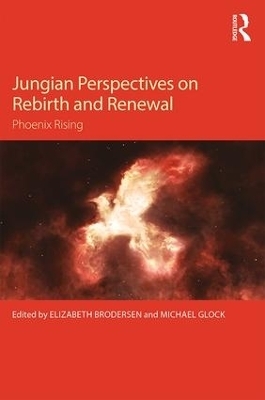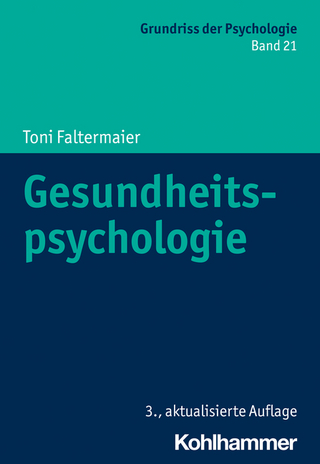
Jungian Perspectives on Rebirth and Renewal
Routledge (Verlag)
978-1-138-19312-3 (ISBN)
Jungian Perspectives on Rebirth and Renewal brings together an international selection of contributors on the themes of rebirth and renewal. With their emphasis on evolutionary ancestral memories, creation myths and dreams, the chapters in this collection explore the indigenous and primordial bases of these concepts.
Presented in eight parts, the book elucidates the importance of indirect, associative, mythological thinking within Jungian psychology and the efficacy of working with images as symbols to access unconscious creative processes. Part I begins with a comparative study of the significance of the phoenix as symbol, including its image as Jung’s family crest. Part II focuses on Native American indigenous beliefs about the transformative power of nature. Part III examines synchronistic symbols as liminal place/space, where the relationship between the psyche and place enables a co-evolution of the psyche of the land. Part IV presents Jung’s travels in India and the spiritual influence of Indian indigenous beliefs had on his work. Part V expands on the rebirth of the feminine as a dynamic, independent force. Part VI analyses ancestral memories evoked by the phoenix image, exploring archetypal narratives of infancy. Part VII focuses on eco-psychological, synchronistic carriers of death, rebirth and renewal through mythic characterisations. Finally, part VIII explores the mythopoetic, visionary dimensions of rebirth and renewal that give literary expression to indigenous people/primordial psyche re-navigated through popular literature. The chapters both mirror and synchronise a rebirth of Jungian and non-Jungian academic interest in indigenous peoples, creation myths, oral traditions and narrative dialogue as the ‘primordial psyche’ worldwide, and the book includes one chapter supplemented by an online video.
This collection will be inspiring reading for academics and students of analytical psychology, Jungian and post-Jungian studies and mythology, as well as analytical psychologists, Jungian analysts and Jungian psychotherapists.
To access the online video which accompanies Evangeline Rand's chapter, please request a password at
http://www.evangelinerand.com/life_threads_orissa_awakenings.html
Elizabeth Brodersen is a Jungian analyst in private practice in Frankfurt, Germany and an accredited training analyst at the C.G. Jung Institute in Zürich. She completed her doctorate in psychoanalytic studies at the University of Essex and is co-chair of the IAJS Executive Committee with Michael Glock. She is author of Laws of Inheritance: A post-Jungian study of twins and the relationship between the first and other(s) (Routledge). Michael Glock is CEO of Bloom Factor Inc., creative director, digital architect and author platform expert, and gained his doctorate in philosophy from Pacifica Graduate Institute, USA. He has developed concepts such as Cultural Futuristics, Way Forward Engineering, Designing Destiny and is co-chair of the IAJS Executive Committee with Elizabeth Brodersen.
Section 1: The Phoenix as symbol 1. Phoenix Rising: A Comparative Study of the Phoenix Symbol as a Goal of Alchemical Work and the Individuation Process Section 2: Native America 2. Re-establishing Dialogue between the Western Psyche and the Psyche-Left-Behind 3. Seeing the forest for the Trees: Birthing Symbolic Life Section 3: Synchronistic symbols as liminal place/space 4. The Burden of Modernity: Three ‘Takes’ on the Snake and Recombinant Visionary Mythology 5. Rebirthing Biblical Myth: ‘The Poisonwood Bible’ as Visionary Art Section 4: India 6. Life’s Threads: C.G. Jung’s 1938 and 1944 ‘Orissa’ Awakenings 7. Parama Pada Sopanam: The Divine Game of Rebirth and Renewal 8. Responses to a Film ‘Monsoon Wedding’ about Integrity Section 5: Primordial archetypal feminine 9. Remembering Eve’s Transgression as Rebirth 10. Symbolic Renewal; Renewal of symbols, the Rebirth of the Trickster Goddesses in Mysteries Section 6: Ancestral memories: familial constellations of rebirth and renewal 11. Adam and Eve as a Kleinian Narrative of Infancy 12. Symbols of Creation in Myth and Dreams: Directive, Orientative, Regenerative 13. Trickster, Trauma and Transformation; Vicissitudes of Late Motherhood Section 7: Eco-psychological, synchronistic carriers of rebirth and renewal 14. Archetypal Images in Japanese Anime Space Battleship Yamato (Star Blazers) 15. Prometheus in Our Midst: The Planet’s Overdependence on oxygen 16. Artic Calving: Birthing A New Vision of the Earth through the Symbol of Ice Section 8: Mythopoetic, psychological dimensions of rebirth and renewal 17. Visionary and Psychological: Jung’s 1925 seminar and H. Rider Haggard’s ‘She’ 18. A Native American Tale within Miss Frank Miller’s Fantasies- How The Psyche Guides
| Erscheinungsdatum | 30.01.2018 |
|---|---|
| Zusatzinfo | 7 Line drawings, black and white; 15 Halftones, black and white |
| Verlagsort | London |
| Sprache | englisch |
| Maße | 156 x 234 mm |
| Gewicht | 430 g |
| Themenwelt | Geisteswissenschaften ► Psychologie ► Allgemeines / Lexika |
| Geisteswissenschaften ► Psychologie ► Psychoanalyse / Tiefenpsychologie | |
| ISBN-10 | 1-138-19312-7 / 1138193127 |
| ISBN-13 | 978-1-138-19312-3 / 9781138193123 |
| Zustand | Neuware |
| Haben Sie eine Frage zum Produkt? |
aus dem Bereich


